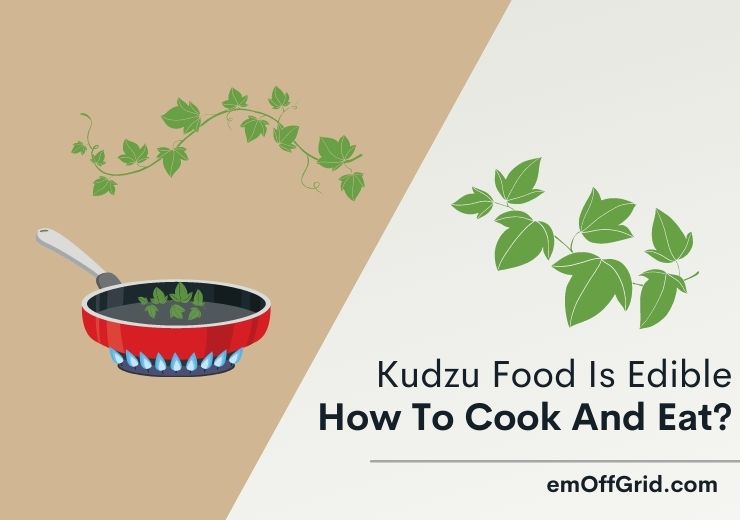Kudzu is one of the famous weeds in the Southern United States, known for its prolific invasion and beautiful purple flowers.
Fortunately, Kudzu food is edible. But the big question is, how do you cook and eat them?
Kudzus are available in almost every state in the Southern US. However, you rarely meet them on the table, yet, they are edible.
These are considered a weed in North America but stapes in the south. You can cook, bake, brew, and grind them according to your recipe.
Read on as we explore the nutritional value of Kudzu and recipes you can actually try!
Contents
What Are Kudzu?
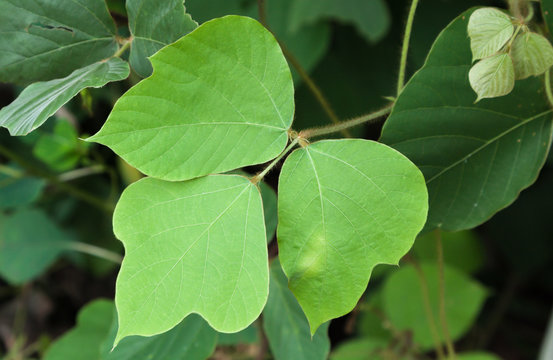
Kudzus are some of the most popular plants in the United States that can be found almost everywhere.
The only place where you can rarely find it is on your table, though it can be used in many different recipes.
Kudzus are green, blossoming plants that originated from Japan and China. They were brought to American soil by farmers in 1876 to feed livestock and control soil erosion.
Kudzus found the climate favorable and conquered the Southeastern United States, causing the US Department of Agriculture to recognize them as a weed.
While it is not a staple in the country, most cooks from the Southern regions enjoy making Kudzu dishes. It can be eaten raw, sauteed, baked, jellied, or deep-fried.
Kudzu Identification
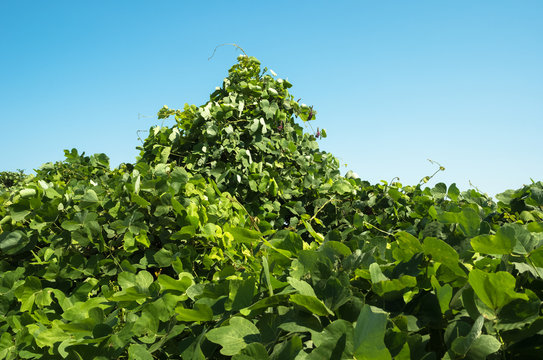
Kudzus are identified by their invasive nature. They are green and are growing fast.
You can often see them covering an abandoned barn, climbing trees, spreading across fields, and colonizing everywhere they grow. It can be found from Florida to New Jersey and as far west as Virginia and Texas.
The iconic feature of Kudzu is its beautiful, purple-colored, grape-smelling flowers. The plant becomes very attractive when blossoming.
You can also identify Kudzu by its first growth rate. According to research, they can grow up to 12 inches a day.
That is what makes them invasive. In fact, it is common to come back from your summer vacation to find your driveway covered by this prolific creeper.
Kudzu Uses And Nutritional Content
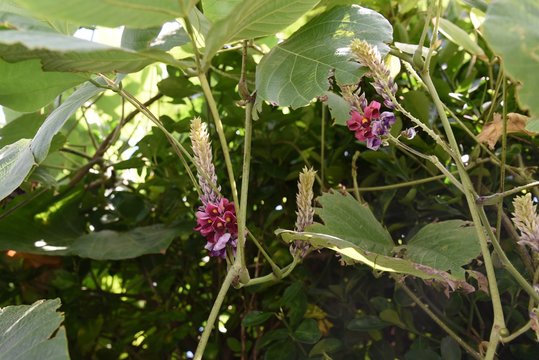
The leaves, flowers, and roots are all edible. The only part of the plant that never gets to the table is the mature stem.
You can use the leaves like spinach, baked in quiches, or cooked like collards. The shoots are soft and taste more like snow peas.
Kudzu’s purple flowers can be used to make delicious jelly, candy, and syrup. Some homesteaders have also used them to make wine.
If you want to get more nutrients, go for the Kudzu’s bulbous roots. You can dry them and grind them into flour, which you can then use to coat foods before frying.
100 g of cooked Kudzu leaves has the following nutritional information:
- 36 calories
- 89.0 percent moisture
- 0.4 g protein
- 9.7 g total carbohydrate.
- 7.7 g fiber
- 0.8 fat
- 34 mg Ca
- 20 mg P
- 4.9 mg Fe
- 0.03 mg thiamin
- 0.91 mg riboflavin
- 0.8 mg niacin
How to Cook and Eat Kudzu?
Kudzu may not be considered a food in many households, but still a great source of emergency or survival meals.
Fortunately, all other plant parts are edible, except the stem. But how do you go about preparing a tasty meal of Kudzu?
You need to harvest Kudzu from the field or buy packaged starchy roots. You can then boil the leaves and flowers or peel the roots as instructed to make jelly, tea, quiche, etc.
Proceed as follows to prepare Kudzu:
Harvesting Kudzu
Many parts of Kudzu are edible, including eaves, flowers, and root tubers. But if you want to harvest Kudzu for your consumption, look for the ones that grow in a safe place.
Avoid Kudzus that grows by the roadside and in waste areas. These may have dust, fumes from the exhaust, and toxic substances.
Also, you need to time the harvesting period right. That depends on the part of the plant you want to harvest.
If you need the flowers, do it between July and September. But if you need the root tubers, the best time to gather them is in the fall or winter. Leaves are best picked in the spring or early summer.
Pick The Blossoms
You will need a pair of garden scissors or shears to cut the thin stalk connecting the flower to the main stem.
Cut each flower at a time and gently add them to your bucket without crushing them.
Also, you will find most of the flowers you need at the base of the plant. So, you won’t need to strain for those high up on the trees.
Pick Up Leaves
Leaves grow directly from the stem. You again need a shear to cut the leaf stalks from the main stem. The tasty and nutritious leaves are the smaller, young-looking, and bright green ones.
Put the leaves into your bucket and avoid crushing them. Also, choose only healthy ones without pests and signs of animal bites.
Dig Up The Roots
Get a shovel and dig up the root tubers near the surface. But if you want a bigger catch, you can go deeper into the ground for tubers that usually weigh over 200 pounds.
You may need hand gloves and garden boots for this purpose.
Wash Kudzu Parts Thoroughly
The first step is to wash them thoroughly with warm water. Ensure you have removed all the stems and other unwanted parts and dirt.
Also, check on the Kudzu bugs. If you are washing roots, you may need a scrub brush to remove any caked dirt on them.
You can eat the leaves raw, but many people boil them first to remove hairs that cover the leaf surface. Bring a pot of water to boil and add the leaves. Boil for about 1 minute before eating or cooking.
Preparing the tips also requires the same procedure as leaves and flowers. The only difference is their nutritional value. They are richer in protein than leaves.
After washing, peel the roots the same way you do with potatoes. You can use a sharp knife or an industrial-grade peeler to peel them.
And what you do next depends on the Kudzu recipe you want to make, which can require you to either shred, roast, pound, or grate the pealed root tubers.
You also grind them into a fine powder, like what you buy from a food store.
8 Kudzu Food Recipes That You Should Know
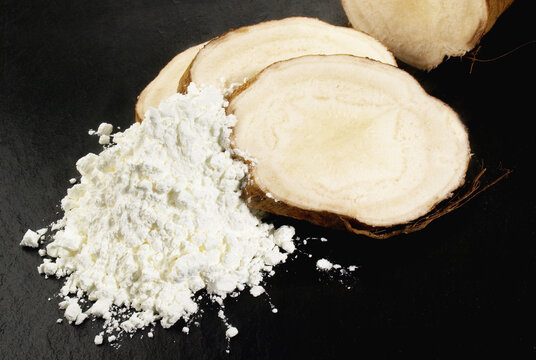
You can prepare a Kudzu snack or drink in different ways. The procedure depends on the desired outcome. You can make many things, including the following:
A Kudzu Stir-fry
A Kudzu stir-fry is one of the quickest meals to make. Proceed as follows:
- Pour oil into a skillet and heat it up
- Add garlic cloves, tamari, bok choy, ginger, and Kudzu powder.
- Pour a quarter cup of water or more, depending on the quantity you want to prepare.
- Cook on low heat for five minutes or until bok choy is fully cooked.
Fried Kudzu Leaves
Making fried Kudzu leaves is also as simple as a Kudzu stir-fry. Follow these steps:
- Harvest fresh Kudzu leaves and then wash them clean.
- Use water and flour to make the batter and your preferred seasoning
- Heat some oil in a skillet
- Dip the Kudzu leaves into the batter and put them in the hot oil.
- Fry on both sides until crispy and remove from oil.
- Dry your crisp between paper towels and serve when warm.
Some Kudzu Tea
Making Kudzu tea is straightforward. You can do it in the following steps:
- Add water to a kettle or saucepan and put it over the kettle on a stove.
- Heat to boil and stir in Kudzu powder or Kudzu leaves
- Use a strainer to filter out the plant material and allow it to cool.
- You can customize the taste with a sprig of mint.
Kudzu Flower Wine
Did you know you can brew Kudzu flower wine? You only need the following ingredients:
- 5-6 kudzu flowers, stripped from their stems
- 2 handfuls of grapes
- 1 cup sugar
- Warm water to fill the jar (not boiling)
Follow these Kudzu flower wine brewing steps to make yours at home.
Lodge L8SK3 10-1/4-Inch Pre-Seasoned Skillet
- PFAS-FREE & NON-TOXIC COOKWARE: Lodge cookware is made without PFOA and PTFE, and we’re proud to say our seasoned cast iron is made with just iron and oil, as it has been since the beginning. We are committed to making products that are safe for you and the people around your table too. Every step in our manufacturing process is designed to protect our employees, the people who love our cookware, and the environment.
- SEASONED COOKWARE FOR EASY COOKING: Lodge pre-seasons every pan with 100% natural vegetable oil, giving it a non-stick finish without synthetic chemicals. The more you use your skillet, the better the seasoning becomes for effortless cooking.
- RUST? DON’T PANIC! IT’S NOT BROKEN: If you notice a spot that looks like rust upon arrival, it’s just oil that hasn’t fully carbonized. If rust appears, simply clean with steel wool, dry, and re-season with vegetable oil.
A Kudzu Quiche
To make a Kudzu quiche, you need the following ingredients:
- 3 eggs
- 1 cup heavy whipping cream
- ½ teaspoon salt
- A pinch of ground pepper
- 1 cup grated mozzarella cheese
- 1 cup chopped Kudzu leaves
Mix all the ingredients in one bowl and then add an unbaked pie shell and bake for about 40 minutes. Remove from heat and let cool.
A Blossom Jelly
- Harvest Kudzu flowers and rinse them in cold water.
- Transfer the washed flowers into a bowl and add a cup of hot water for every cup of Kudu flower.
- Cool the bowl and its content in a refrigerator for eight hours.
- Strain and discard the flowers.
- Mix one tablespoonful of lemon juice and a package of pectin with the resulting Kudzu flower liquid
- Bring to a boil and add sugar to taste. Stir to ensure all sugar crystals dissolve.
- Remove from heat and serve when hot.
A Pudding
To make a Kudzu pudding, you need the following:
- 1 can of coconut milk
- 2 tablespoons of maple syrup
- 1 tablespoon of lime zest
- ¼ cup of lime juice
- 1 teaspoon of vanilla extract
- ¼ teaspoon salt
Mix all the ingredients in a saucepan and put over medium heat, and simmer. Add 3 tablespoons of Kudzu powder and let it thicken.
Pour into the cups to cool. You can top up with baked, chopped pistachios.
A General Thickener
A Kudzu powder can be used as a general thickener. Add about one and a half tablespoonfuls of Kudzu powder into one cup of the liquid to be thickened. You can increase the quantity depending on your preferred texture.
Whisk the liquid until all the clumps are broken down. You can put the mixture in a saucepan and heat it to quicken the process.
Fun Facts About Kudzu
Kudzus are prolific creepers that can colonize an area over a short time. There is no one with firsthand experience of this than residents of the Southern United States.
Some people have even shared their stories of coming from summer vacation to find their cars and homes covered by Kudzu.
Kudzus can grow a foot long a day. If you sit in your backyard for many hours, the plant will cover your foot.
Thai Kitchen Organic Unsweetened Coconut Milk, 13.66 Fl Oz (Pack of 6)
- Full fat coconut milk organic with no added sweeteners
- Non-GMO
- Gluten free, non-dairy, no preservatives
Wrapping Up
Kudzu can be sustainably harvested to supplement the food supply, especially if you live in an area where they grow in high numbers.
They are nutritious, delicious, and come with many health benefits. You can also prepare Kudzu in different ways and according to your recipe.
Thank you for reading this article at Em Offgrid. We hope you have found the information you have been looking for. And if that is so, kindly share our content and explore the site for related articles.
